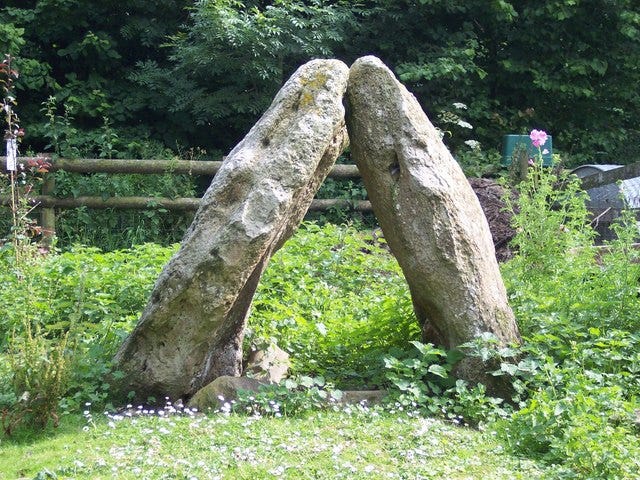Once out of the marshes, Alfred heads towards Egbert’s Stone. This was named after King Egbert, who was Alfred’s grandfather. He reigned between AD 802–839. In his life, he oversaw the consolidation of most of the Anglo-Saxon kingdoms, the submission of the Briton’s in Cornwall, and fought off Viking incursions. He was recognised as a bretwalda, overlord or ‘wide ruler’ of the Anglo-Saxon peoples.
Bretwalda is a controversial term amongst historians, as even though it was used by the Anglo-Saxon, it is rather ambiguous. It wasn’t a formal position, like a king or emperor, but appears to describe the extent of the ruler’s influence.
By choosing to rally at Egbert’s Stone, King Alfred was symbolically stating to his people that he would restore the kingdom, and the power of Wessex, just as in King Egbert’s time.
It is likely the stone was sited near the eastern part of Selwood, near Kingston Deverill. There are two sarsen stones, probably part of a Bronze Age burial chamber. The local traditions suggest these were moved from nearby Court Hill, where Egbert allegedly held meetings. There are other candidates, but the evidence isn’t as strong as this.
At this stone, Alfred rallied his fighters, or fyrds. These were temporary fighter. They were a locally raised force of non-professional warriors, who were summoned to defend the kingdom. They were used mainly for defence of the realm, to repel invaders or assist in local conflicts. Though under Egbert’s reign, they were used for offensive military campaigns too.
These units were made up of free men, including ceorls (peasants who were free), and thegns (landed retainers and nobles). Slaves were not expected to fight. Service was usually for a period of 40 days, and after this, the men returned to tend their land.
The Anglo-Saxon Chronicle records that these forces rejoiced to see their king. By using this stone, Alfred was able to rally his troops. The symbolism of Egbert galvanised Alfred’s troops, and gave them hope.
The muster at Egbert’s Stone was a key turning point in the story. It was a step away from a lost fractured kingdom, and towards the first steps of renewal. From here, Alfred would march to Iley Oak and then off to the Battle of Edington.
At Egbert’s Stone, the people of Wessex found hope in a renewed king. This unified them with one purpose, and gave them the will to fight, and fight against what seemed like impossible odds.
In our own personal dark times, we can feel lost and alone. But if we have hope, we will keep going.
As we see above, hope is invariably not found within us, but outside us. It’s those things like spouses, family, friends and goals which give us the meaning to keep pushing on, even when we feel like we are running on empty.
The Anglo-Saxons saw in Alfred a new hope, someone they could trust, and a path ahead for victory.





I am hoping we will name our Anglican parish after Saint Alfred when we do finally plant. The man is growing on me
What is your source for these highly detailed accounts of Alfred's life? I've read a few biographies and never gotten some of these stories you've shared